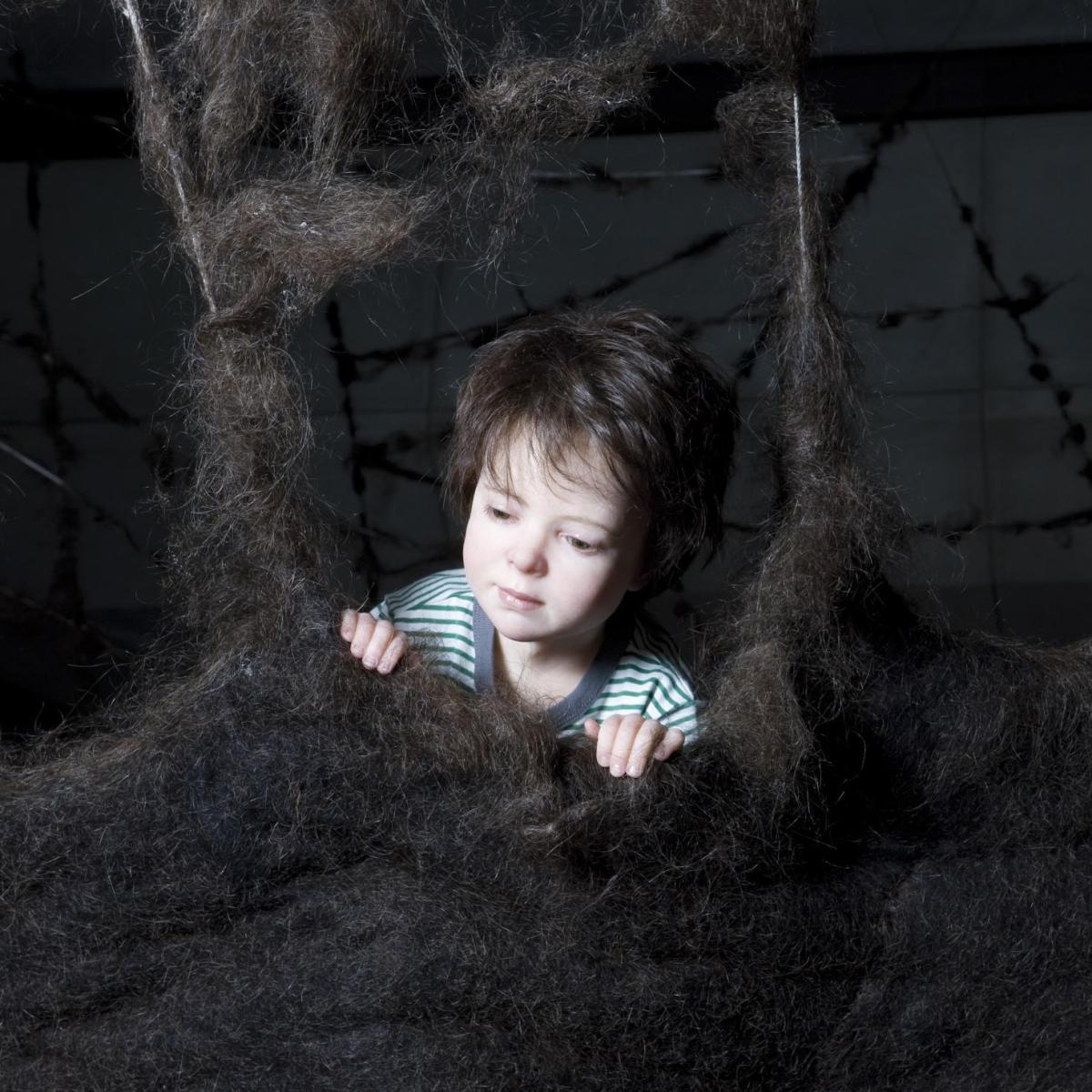Amongst her most stunning and revered works are life-like statues, made from a combination of materials including fibreglass, silicone, and human hair. Each piece tells a story of a creature otherworldly yet familiar, representing a variety of ethical dilemmas that we, as a race, encounter.
The largest exhibition of Piccinini’s work to date is currently showing at the Art Gallery of South Australia. Upon entry to the exhibition, one cannot help but feel like the space has been invaded. Looking from the stairs in the gallery, a huge hairy nest adheres to the stairs and wall; within it, a young, curious-looking boy sits with shiny, worm-like creatures. Eerieness sets in when you walk down the stairs and behold the bottom of the piece: mattered hair wraps around shiny, head-like eggs.
Piccinini encourages her audience to consider the implications arising from humans’ artificial manipulation of the environment – often done at the expense of other life. She raises a number of moralistic questions that come into play when we decide to create something for our own benefit.
Her famous piece, The Young Family, is inspired by calls to farm genetically modified pigs for their organs, to alleviate the shortage of human organs for transplant. It depicts a bald, wrinkly, pig-like creature with dog-like ears and wistful, humanoid features in the act of feeding its pups. The piece is initially quite disturbing; however, the more time that is spent with it, the more a sense of empathy with the animal is felt. She is doing something that we, as humans, do.
Piccinini contends she is merely a participant in the debate, not an authority. She says she would consider sacrificing the animal to save her own child, despite her empathy for the beast.
Instead of asserting a moralistic position, Piccinini provides her audience with an understanding of the complexity of the debate within an often emotionally provocative context. She asks us: if we create life, which evolves and adapts to the environment we also inhabit, do we have a right to feel invaded? Do we have a right to prioritise our life above all others? She poses these questions with astonishing artistic skill and the ability to incarnate unearthly, yet strangely familiar beings which deserve more than just a glance to truly comprehend.
Patricia Piccinini: Once upon a time…
Art Gallery of South Australia
April 16 – June 26
www.artgallery.sa.gov.au
Picture Credit: Patricia Piccinini
Australia, born 1965
Aloft (installation Art Gallery of Western Australia, Perth)
2010
(detail)
fibreglass, felted human hair and wool,steel cable, silicon, human hair, horse
hair, clothing, electronic motors
1290.0 x 1510.0 x 7500.0 cm
(installation dimensions variable)
Courtesy of the artist
photographer: Bo Wong
Courtesy of the artist, Roslyn Oxley9 Gallery, Sydney, Tolarno Galleries, Melbourne, and Haunch of Venison, New York





